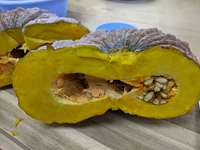
Figure 8. Cucurbita moschata ‘Thai Kang Kob’. Source: Holly Sobetski
From the family Cucurbitaceae which includes cucumbers, Cucurbita moschata is also known as tropical pumpkin or ayote. It is native to the northern lowlands of South America and domesticated throughout México and the Americas before Spanish influence (Sanjur et al., 2002). Often intercropped with maize (Zea mays), this squash fills an important place in the world’s food supply. ECHO’s global seed bank offers the ‘Thai Kang Kob’ cultivar from Thailand, and it will be a welcome addition to gardens and kitchens worldwide (Figure 8).
Climate
C. moschata grows well up to 1800 m, and thrives when daytime temperatures are at least 20°C and nighttime temperatures are above 14°C (Gbemenou et al., 2022).
Soils
Sow tropical pumpkin seeds into well-drained soils (sands or loams) that have a slightly acidic or neutral pH of 5.5-6.8 for healthy root development (Gbemenou et al., 2022). Well-decomposed compost and other organic matter amendments can provide fertility and improve other soil properties (e.g., water and nutrient holding capacity) that favor plant growth. Mix these amendments into the planting mound, ensuring that the soil is well prepared to facilitate good seed-to-soil contact and aid germination .
Cultivation
The recommended spacing for tropical pumpkins is 2 m in-row by 2 m between-rows (Gbemenou et al., 2022). Increase spacing if you plant it in mounds or intercrop it with other crops such as maize. Increase spacing according to the structure of the main crop.
C. moschata grows as a long vine and occupies a lot of space. Trellis or intercrop for best use of garden space. C. moschata develops a taproot about 1 m deep and an extensive root system, needing at least 2.5 cm of water per week from rainfall or irrigation. Plants produce both male and female flowers that are short-lived. Ornamental flowers planted nearby in rows or throughout the garden help to attract wild pollinators and bees.
Harvested pumpkins last for more than a month without refrigeration or special postharvest practices, contributing to its role in subsistence diets worldwide (Brecht, 2004; Nansikombi et al., 2019). Store pumpkins in a shaded/cool, dry, and well-ventilated space.
Pests
Potential insect pests include cucumber beetles (Diabrotica spp.), squash bugs (Anasa tristis), squash vine borers (Melittia satyriniformis), cutworms (Noctuidea), pickleworm (Diaphania nitidalis) and stink bugs (Pentastomidea). Watch for spider mites (Tetranychus urticae) and control them before they become problematic (Clemson, 2021). Avoid neonicotinoid pesticides and tobacco-based repellents as they affect bees and pollination. Always control aphids, as they are a vector of viral diseases that affect cucurbits (see below).
Diseases
Viruses like cucumber mosaic virus and the cucumber green mottle mosaic virus (controlled in the US) are common. Within infected areas, The Animal and Plant Inspection Service (APHIS) recommends a three-year crop rotation and crop residue burning, along with cleaning and disinfecting tools and boots with a 1:10 dilution of bleach (6% sodium hypochlorite) for 15 minutes (APHIS, 2024; Girotti, 2015). Use disease-free seeds and keep plant foliage as dry as possible.
As with most plants, increasing air circulation within the crop helps prevent water-borne diseases. Downy mildew (Pseudoperonospora cubensis) is a mold that enters the plant through the stomata. To control this disease, water in the early morning and allow the leaves time to dry. Powdery mildew appears as a grey/white powder on affected plants. Prune and, if necessary, rogue infected plants. Consult local extension services and expertise for specific cultivation practices and natural pest and disease control before considering the application of other, more toxic means.
Culinary

Figure 9. Flesh of ‘Thai Kang Kob’ cultivar of C. moschata. Source: Holly Sobetski
The dark green, warty fruit of ‘Thai Kang Kob’ turns pale orange when mature and has dark orange flesh (Figure 9). To prepare the squash, cut off the ends, peel off the skin, and remove the seeds. Cut lengthwise and either stuff the squash or cut the flesh into desired shapes for boiling or roasting. One cup of raw C. moschata (140 g) contains enough to satisfy the recommended daily allowance of vitamin A (USDA, 2015).
Besides the flesh, people eat and sell the seeds, acknowledging their nutritional content. People eat the blossoms in a variety of ways (most commonly, raw or fried). Sometimes, people pickle female blossoms with small undeveloped squashes still attached. Always check the blossoms for insects and bees before eating. Leaves and young stems are edible as a green vegetable or added to soups.
References
APHIS. 2024. Cucumber Green Mottle Mosaic Virus and Watermelon Green Mottle Mosaic Virus. Animal and Plant Health Inspection Service, U.S. Department of Agriculture.
Brecht, J.K. 2004. Pumpkin and winter squash. The commercial storage of fruits, vegetables, and florist and nursery stocks (Preliminary On-line Version-Draft Revised 2004). USDA, ARS. Agriculture Handbook 66.
Clemson. 2021. Cucumber, Squash, Melon & Other Cucurbit Insect Pests. Fact Sheet HGIC 2207. Clemson Cooperative Extension. Clemson, SC.
Gbemenou, U.H., V. Ezin, and A. Ahanchede. 2022. Current state of knowledge on the potential and production of Cucurbita moschata (pumpkin) in Africa: A review. African Journal of Plant Science 16(1):8-21. https://doi.org/10.5897/AJPS2021.2202
Girotti, N. 2015. Guidelines For Using Sodium Hypochlorite as a Disinfectant for Biological Waste [http://edn.link/9xd7ac]. Western University. Ottawa, Canada.
Nansikombi, N., J.H. Muyonga, and Y.B. Byaruhanga. 2019. Association between fruit characteristics and postharvest stability of different pumpkin (Cucurbita) species. Journal of Food Research 8(4):131-145
Sanjur, O.I., D. R. Piperno, T. C. Andres, and L. Wessel-Beaver. 2002. Phylogenetic relationships among domesticated and wild species of Cucurbita (Cucurbitaceae) inferred from a mitochondrial gene: Implications for crop plant evolution and areas of origin. Proceedings of the National Academy of Sciences 99(1):535-540. https://doi.org/10.1073/pnas.012577299
USDA. 2015. National Nutrient Database for Standard Reference.